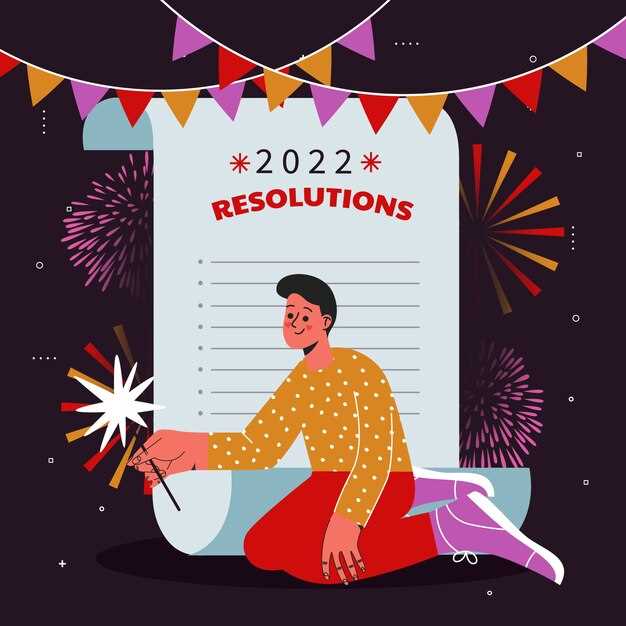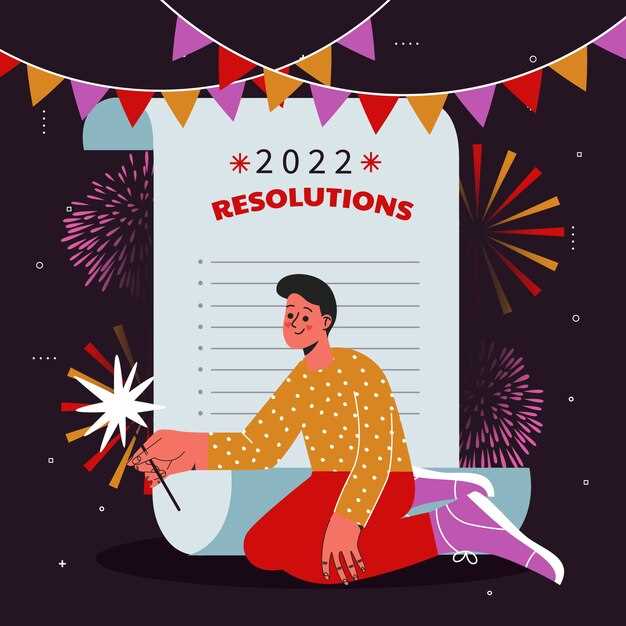Secure your guest list early. Knowing how many people will attend helps you decide on the venue, catering, and decorations. Use digital tools or apps to manage RSVPs easily. This streamlines the planning process and keeps everything organized.
Choose a theme that resonates with your guests. A cohesive theme not only makes decorating simpler but also enhances the overall experience. Whether it’s a seasonal celebration or a specific color palette, make sure it reflects the preferences of your attendees.
Allocate your budget wisely. Prioritize key elements like food and venue over less critical details. Consider DIY options for decorations or favors to keep costs down while adding a personal touch. This approach ensures that resources are focused where they make the biggest impact.
Create a timeline to track tasks and deadlines. Outline what needs to be done each week leading up to the event. Setting reminders for key actions like booking vendors or confirming seating arrangements will help you avoid last-minute stress.
Engage with your guests before the event. Utilize social media or group chats to build excitement. Share sneak peeks of the planning process or solicit input on fun activities. This not only keeps everyone involved but also sets the tone for a lively gathering.
Choosing the Perfect Venue for Your Wedding Reception

Prioritize location when selecting your venue. Choose a spot that is convenient for most guests. Consider accessibility and proximity to accommodations, especially for those traveling from afar.
Evaluate the venue’s capacity. Your guest list will dictate the size needed. Aim for a space that comfortably fits your expected attendees without feeling overcrowded.
Inspect the venue’s layout. Visualize how you will organize seating, dining, and dancing areas. A well-designed flow keeps guests engaged and comfortable throughout the event.
Consider the outdoor and indoor options. Some venues offer both, allowing flexibility for inclement weather. Outdoor spaces can enhance ambiance, while indoor settings provide control over environmental variables.
Check for included amenities. Tables, chairs, and linens can add to your overall budget if not provided. Understand what comes with the venue rental to avoid surprises later.
Look into the venue’s restrictions. Some locations impose noise limits or curfews. Ensure these guidelines align with your vision for the evening.
Assess the venue’s vibe. Select a space that matches your wedding theme. A charming rustic barn offers a different feel than a sleek modern loft. The right ambiance enhances your celebration.
Finally, visit the venue multiple times. Different times of day provide a sense of lighting and atmosphere. This insight helps you make an informed decision.
Budgeting for Your Wedding: How to Allocate Funds Wisely

Allocate 50% of your budget for the venue, catering, and necessary rentals. These are often the largest expenses and directly impact guest experience. Research local venues early; some may offer all-inclusive packages that save money.
Set aside 25% for attire, photography, and entertainment. Invest in a skilled photographer and videographer to capture memories. Comparing options will help find quality service within your budget.
Reserve 15% for decor and floral arrangements. DIY options or seasonal flowers can dramatically reduce costs without sacrificing style. Prioritize key areas like ceremony backdrops or centerpieces for a visual impact.
Allocate the remaining 10% for miscellaneous expenses such as invitations, transportation, and favors. Create a checklist to track all items to avoid overspending in any category.
Involve your partner in decision-making to align priorities. Regularly review and adjust your budget as needed. This approach maintains transparency and minimises financial stress.
Consider potential sources of income, like contributions from family members or wedding crowdfunding. Being open about your budget with close friends can lead to unexpected help or suggestions for cost-saving alternatives.
Stay organized with a spreadsheet or budgeting app to monitor expenses. Update it frequently to maintain clarity on your spending and ensure you stick to your financial plan.
Creating a Guest List That Works for Your Event Size

Tailor your guest list to match the size of your venue and the overall feel of your event. Begin with a clear capacity number from your location. Know exactly how many people can comfortably fit. This ensures an inviting atmosphere without overcrowding.
Next, establish the purpose of your event. For a formal gathering, limit your list to close acquaintances, while casual events allow for a broader circle. Create categories to sort your guests:
- Must-Haves: Key individuals who should be at the event.
- Nice-to-Haves: Friends or colleagues you’d enjoy having but aren’t essential.
- Optional Additions: People you can invite if space allows.
Consider relationships and dynamics. Invite people who will positively interact, fostering a joyful experience. Balance your list to include family, friends, and professional contacts, as appropriate for your event type.
Utilize tools like spreadsheets or guest list apps to manage names and track RSVPs. This helps prevent double invitations and keeps your numbers in check. Set an RSVP deadline to finalize your arrangements without last-minute stress.
Assess the responses. If your numbers exceed your venue’s capacity, reach out to those who might be understanding if they need to be uninvited. Adjust your list as necessary, keeping the integrity and purpose of the event intact.
Finally, stay flexible. Some guests may request to bring plus-ones, while others may decline your invitation. Have a plan for how to accommodate these requests and maintain an engaging environment for everyone present.
Wedding Reception Decor: Themes That Make an Impact
Select a theme that resonates with the couple’s personality, ensuring a memorable atmosphere. Rustic charm remains popular, featuring natural materials like wood and burlap. Incorporate mason jars, fairy lights, and wildflowers for a cozy feel.
Romantic Elegance
Romantic elegance works beautifully with soft palettes. Incorporate pastels and gold accents. Use draped fabrics to create a sophisticated ambiance. Crystal or glass centerpieces capture light and add a touch of glamour. Candles in varying heights, positioned around the venue, enhance intimacy.
Classic Glam
This theme combines timeless elegance with modern touches. Think black, white, and metallic colors. Utilize elegant table settings with fine china and polished silverware. A grand floral arrangement as a centerpiece or hanging installations creates a stunning focal point. Candles on each table set a luxurious mood.
| Theme | Key Features |
|---|---|
| Rustic Charm | Wood textures, burlap, mason jars |
| Romantic Elegance | Pastel colors, fabric draping, candlelight |
| Classic Glam | Black and white, metallic accents, elegant table settings |
Work closely with vendors to ensure that the decor aligns with the chosen theme. Personal touches, such as family photos or handwritten notes, add uniqueness. Choose elements that reflect the couple’s story, making the celebration truly theirs.
Selecting the Right Catering Options for Your Celebration
Choose a catering style that aligns with your event’s theme and atmosphere. Consider options like buffet, plated service, or food stations to enhance guest experience.
- Buffet: Allows guests to serve themselves, offering variety and flexibility. Perfect for casual gatherings.
- Plated Service: Ideal for formal events where a sit-down meal is preferred. It creates a refined dining experience.
- Food Stations: Interactive and fun. You can offer different cuisines, which encourages mingling and provides diverse choices.
Next, think about dietary restrictions. Collect information on guests’ preferences before finalizing the menu. Provide vegetarian, vegan, gluten-free, and nut-free options to cater to all attendees.
Consider the season when selecting menu items. Seasonal ingredients often taste better and add freshness to your dishes. For example, a summer event could feature light salads and refreshing fruits, whereas winter events can focus on hearty meals.
Don’t forget to include beverages. Offer a balanced selection of alcoholic and non-alcoholic drinks. Collaborate with a caterer who can pair drinks with your menu.
Lastly, sample your menu before the event. Arrange a tasting session with your caterer to ensure the quality meets your expectations. This step helps you make necessary adjustments and reassures you about your choices.
Personalizing Your Event with Unique Wedding Favors
Choose wedding favors that reflect your personality as a couple. Customizing candies with your initials or the wedding date adds a personal touch. Consider local flavors; if you met in a city with a distinctive treat, incorporate that into your giveaways.
Handmade items stand out. Create small pots of jam, candles, or soaps. Add a label with a meaningful quote or your names to each. This will leave a lasting impression and make guests feel appreciated.
Think about experiences as favors. Give your guests seeds to plant or small DIY kits related to a shared hobby. This approach makes for memorable interactions long after your wedding day.
Personalized keepsakes are always a hit. Items like engraved keychains, coasters, or picture frames can carry special messages. Pick designs that resonate with your love story or reflect your wedding theme.
Consider incorporating charitability into your gifts. Make donations in your guests’ names to a cause you both cherish, and share this with them. This adds a meaningful layer to your celebration.
Finally, present favors in a creative way. Unique packaging can elevate even simple gifts. Use seasonal elements like greenery for a rustic feel or elegant silk ribbons for a classic touch. Your guests will appreciate the thoughtfulness and creativity.
Lighting Techniques to Enhance Your Reception Atmosphere
Utilize string lights to create an intimate, warm ambiance. Hang them overhead or around trees to transform your venue into a cozy gathering spot.
- Up lighting: Position lights at the base of pillars or walls to draw attention upward. This elevates the space and adds depth.
- Accent lighting: Highlight specific decor elements, such as centerpieces or artwork, with focused lighting to add visual interest.
- Colored gels: Use colored filters over your lights to introduce personality to the venue. Choose colors that match your theme for a cohesive look.
- Candlelight: Incorporate candles for a soft, natural glow. Use varied heights and types for added dimension and texture.
Experiment with dimmers to adjust brightness levels throughout the event. This allows you to switch from vibrant, energetic lighting during the social hour to softer settings for intimate moments.
- Combine multiple light sources to create layers. This technique enhances depth and prevents flat lighting.
- Consider using gobos, which are templates that project shapes and patterns, to add creative designs on walls or floors.
- Incorporate table lamps or lanterns on dining tables for warmth and sophistication.
Integrate light into your entertainment. Use spotlights to draw attention to performances or key moments, ensuring guests stay engaged with the highlights of the evening.
Personalize lighting options with custom projections featuring names, monograms, or event themes. This makes the experience feel unique and tailored.
When choosing lighting techniques, think about the function of each area. Different spaces may require different approaches, so plan accordingly.
Entertainment Ideas That Will Keep Guests Engaged
Host a themed trivia night. Create questions tailored to your guests’ interests, mixing fun facts with personal anecdotes. This not only sparks conversation but also brings out friendly competition.
Set up interactive stations. Consider a DIY photo booth with props related to the event’s theme. Guests can capture memories while mingling, encouraging spontaneous interactions.
Incorporate live demonstrations. Invite a local chef or artisan to showcase their skills. This engaging element keeps eyes on the action and can lead to delicious samples or unique creations.
Introduce a surprise performance. Whether it’s a magician, a comedian, or a dance troupe, unexpected entertainment adds excitement and keeps attention focused on the moment.
Organize group games that require teamwork. Activities like scavenger hunts or charades ignite laughter and collaboration, making it easy for guests to bond and enjoy the event together.
Provide a space for creative expression. Set up a craft station where guests can create their own souvenirs, such as custom candles or painted rocks. This hands-on experience allows for personal interaction while making something memorable.
Host a mini talent show. Invite guests to share their hidden talents, whether it’s singing, poetry, or juggling. This fun showcase not only entertains but also deepens connections among attendees.
Close with a group activity, such as a guided toast or a collective game where everyone can participate. This fosters a sense of unity and leaves a lasting impression as the event concludes.
Managing the Timeline: When to Schedule Key Moments
Schedule the start of your event at a time that offers guests maximum participation. For evening gatherings, aim for a start time between 6 PM and 7 PM. This window allows guests to arrive after work and enjoy some socializing before the main activities begin.
Timing for Activities
Plan significant activities early in the event when guests are still fresh and engaged. For example, if hosting a birthday party, schedule the cake cutting or speeches around the 30- to 45-minute mark. This timing builds excitement and guarantees attention before guests start feeling distracted.
Buffet and Networking
If your event includes food, organize the buffet line shortly after the initial activities. This allows guests to mingle and discuss while enjoying their meal. For networking events, cluster key discussions or presentations within the first hour, ensuring attendees leave feeling they gained value right away.
Conclude your event thoughtfully. If you plan a closing announcement, do it 15 minutes before the actual end time. This gives guests time to wrap up conversations and gather their belongings. With mindful timing, your event flows smoothly, leaving a memorable impression.
Choosing a Color Palette That Reflects Your Style
Identify your personality and taste as a starting point for selecting a color palette. Consider whether you gravitate towards bright, bold colors or prefer soft, muted tones. Choose colors that resonate with you emotionally, creating an atmosphere that feels authentic and inviting.
A good guideline is to limit your palette to three to five colors. This ensures harmony throughout your event while allowing you to create visual interest. Use a primary color for dominant features, such as table linens or balloons, and secondary colors for accents, like centerpieces or invitations.
Consider the psychology of colors. For example, blue evokes trust and tranquility, while red energizes and excites. Think about how you want your guests to feel and select colors that align with that experience.
Gather inspiration from various sources. Nature, fashion, or current design trends can provide fresh ideas. Create a mood board with fabric swatches, paint samples, or images that embody your desired color scheme. This visual collection will help you refine your choices.
Test your color combinations. Use small swatches in different lighting conditions to see how they interact. Colors may appear differently under natural and artificial light, so adjust accordingly to maintain your intended effect.
| Color | Emotion | Usage |
|---|---|---|
| Blue | Trust, Calm | Table settings, Invitations |
| Red | Energy, Passion | Accents, Decorations |
| Yellow | Joy, Warmth | Lighting, Centerpieces |
| Green | Growth, Harmony | Floral arrangements |
| Purple | Luxury, Creativity | Table decor, Favors |
Always keep practical aspects in mind. Consider the venue’s existing colors and whether your palette complements or clashes with them. This will enhance cohesion, contributing to an intentional look and feel.
Finally, trust your instincts. Personal touches, like family heirlooms or favorite items in your chosen colors, can add a meaningful layer to your event. Your color palette should be a reflection of who you are, making the celebration distinctly yours.
Tips for Hiring Reliable Vendors and Service Providers
Check reviews and references before making a decision. Look for vendors with consistent positive feedback from past clients. Ask for testimonials and follow up with a few references to understand their experience.
Request detailed quotes from multiple vendors. This not only provides a comparison of prices but also gives insight into what each vendor includes in their services. Pay attention to any hidden fees or additional charges.
Assess Communication Skills
Clear communication is vital in any vendor relationship. Gauge their responsiveness during the inquiry stage. A reliable vendor will promptly address your questions and keep you informed throughout the planning process.
Verify Credentials and Experience
Ensure that each vendor has the necessary licenses and insurance. This protects you from liability in case of accidents or mishaps. Additionally, check their experience in handling events similar to yours. Vendors with relevant experience can offer valuable insights and solutions.
- Conduct an in-person meeting to discuss your vision and expectations.
- Assess their portfolio to evaluate the quality of their previous work.
- Ask how they handle challenges or unexpected issues.
Lastly, trust your instincts. If something doesn’t feel right during the hiring process, it may be worth considering alternative options. Selecting the right vendors sets a positive tone for your entire event.
Incorporating Technology for Invitations and RSVPs
Use digital platforms for sending invitations, allowing guests to respond with a simple click. Various services enable easy customization and tracking of RSVPs. Opt for platforms like Evite or Paperless Post, which offer beautiful templates and user-friendly interfaces.
Integrate social media for casual events. Create a private event page on Facebook or an event on Instagram. This not only helps spread the word but also provides a space for guests to share excitement and updates.
Consider using QR codes on printed materials. Guests can scan these codes to access event details or RSVP forms directly on their devices. This method simplifies the process and eliminates the hassle of manual entry.
Enhance guest engagement with automated reminders. Set up email notifications or push notifications through event apps to remind attendees of the date and any important details as the event approaches.
| Method | Description | Benefits |
|---|---|---|
| Online Invitations | Utilize platforms like Evite and Paperless Post for sending customizable digital invites. | Easy tracking and stylish designs. |
| Social Media Events | Create private event pages on Facebook or Instagram for invitation and updates. | Encourages sharing and guest interaction. |
| QR Codes | Include QR codes on printed materials for quick access to event details. | Simplifies RSVP process. |
| Automated Reminders | Set up email notifications or app alerts for reminders about the event. | Keeps guests informed and engaged. |
Utilize these strategies to streamline your invitation process and enhance the RSVP experience, making it more enjoyable for your guests.
Video:
Top Ten Party Planning Tips – Marti & Stuart – Big Dot of Happiness
Top Ten Party Planning Tips – Marti & Stuart – Big Dot of Happiness by Big Dot of Happiness 7,379 views 12 years ago 2 minutes, 52 seconds
Q&A:
What are the first steps to take when planning a party?
Starting with a clear theme is a great way to set the tone for your event. Consider the occasion and the preferences of your guests. From there, you can outline the guest list, venue, date, and time. It’s also helpful to create a budget to guide your decisions as you plan the food, decorations, and entertainment.
How can I choose a suitable venue for my event?
Choosing the right venue depends on several factors. First, consider the size of your guest list—make sure the space is large enough to accommodate everyone comfortably. Next, think about the type of event you’re hosting; some venues are better suited for formal gatherings, while others may cater more to casual celebrations. Location and accessibility are also key factors—ensure your venue is easy to reach for all guests. Lastly, check for facilities such as restrooms, parking, and catering options based on your needs.
What kind of food should I serve at my party?
Your food choices should reflect the theme and formality of the event, as well as the dietary preferences of your guests. Consider serving a mix of appetizers, main dishes, and desserts. Buffet-style setups are often more flexible, allowing guests to choose what they like. Don’t forget about beverages! Offer a variety of options—non-alcoholic drinks, soft drinks, and potentially a signature cocktail that fits your theme. Ensure you have alternatives for guests with dietary restrictions too.
How can I make sure my party has a fun atmosphere?
Creating a fun atmosphere can involve several elements. Start by selecting a theme that resonates with your guests. Incorporate music that fits the mood—consider hiring a DJ or creating a playlist ahead of time. Engaging activities or games can also keep guests entertained. Also, don’t shy away from playful decorations that reflect the theme. Encourage mingling by arranging seating to promote conversation and interaction among your guests.
What are some tips for keeping the party organized on the day of the event?
To maintain organization, create a detailed timeline for the day of the event outlining tasks like setting up decorations, food preparation, and guest arrivals. Assign specific responsibilities to trusted friends or family members, so they know how to assist you. Having a checklist on hand can help ensure nothing is overlooked. It’s also a good idea to have a designated point of contact for any vendors or services during the event, allowing you to enjoy the celebration without stress.
What are some key tips for organizing a successful party?
To organize a successful party, consider the following tips: first, determine your budget and stick to it. This will guide your decisions on venue, food, and entertainment. Next, choose a theme that resonates with your audience; this can create a cohesive atmosphere. Make a guest list and send out invitations well in advance to ensure everyone can attend. Carefully select your menu, taking into account dietary restrictions and preferences. Finally, think about entertainment and activities that will engage your guests and make the event memorable, such as games or a photo booth.
How can I ensure that guests have a great time at my event?
To ensure that guests enjoy your event, focus on creating a welcoming environment. Greet guests as they arrive to make them feel valued. Offer a variety of food and drink options to cater to different tastes. Plan engaging activities that encourage interaction among guests, such as icebreaker games or themed contests. Pay attention to the flow of the event; avoid long gaps of downtime between activities. Finally, be flexible and willing to adjust your plans based on the mood and preferences of your guests. Staying attentive and responsive can greatly enhance their experience.
